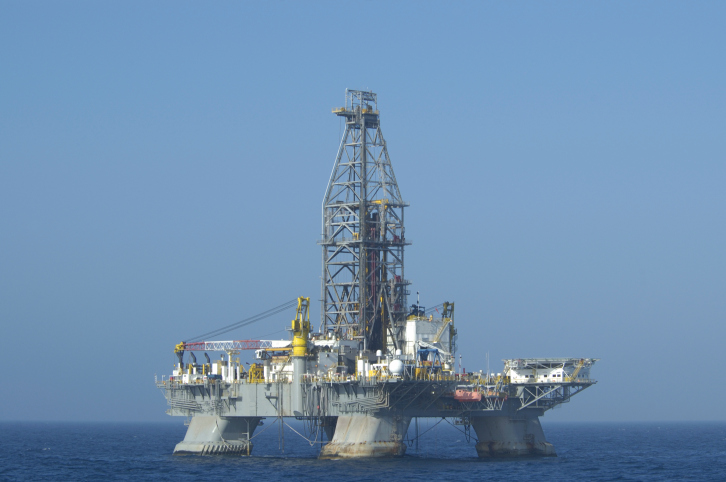
With oil currently trading at less than $60 a barrel, the demand drops for expensive rigs that can drill wells under thousands of feet of water and more thousands of feet of sea floor and often cost half a million dollars a day. Forecasts for an average per barrel price for crude in 2015 are now down around $80 a barrel and unless the outlook improves, that average will go down.
Companies that would hire the rigs and services of these offshore drillers are all looking to cut capital spending next year, and what that means for the drillers is that once a contract is complete on a rig, chances are high that there will be nowhere else for that rig to go. Thus it will either sit idle or be scrapped.
Of the three drillers that were publicly traded the last time crude oil prices fell this sharply in 2008 and 2009, the companies’ stocks lost between 50% and 70% of their value before recovering. But since mid-May of 2008, none of those three stocks has shown a share price gain, and all three are down between 60% and 90% compared to their share price levels six years ago.
Even though share prices have dropped sharply, now may not be the time to buy. There could be more bloodletting in this sector after the big oil companies announce their capital spending budgets for next year.
ALSO READ: Strong Insider Buying as Market Volatility and Oil Plunge Move Stocks
The most successful of the offshore drillers since it was founded in early 2010 has been Seadrill Ltd. (NYSE: SDRL). The company’s run of good luck came to an end this year, and just last month the company suspended its $1.00 per share quarterly dividend in an effort to reduce its debt. As of Monday, the company’s market cap is around $5.34 billion and its forward price-to-earnings (P/E) ratio is a paltry 3.72. Shares were trading down about 1.2% at $10.92 Monday, after posting a new 52-week low of $10.76 in the day. The 52-week high is $41.29. Year to date, shares are down 74%.
U.K.-based Ensco PLC (NYSE: ESV) is the current market cap leader among the offshore drillers, with a value of $6.24 billion. Ensco did pay its $0.75 per share quarterly dividend in November, and its dividend yield is currently 10.7%. Like Seadrill, Ensco’s stock posted a new 52-week low Monday at $26.58, versus a 52-week high of $58.82. Shares are down 53% year-to-date.
Transocean Ltd. (NYSE: RIG) is a Switzerland-based driller that has also been hit hard this year, down 66% year-to-date. The company’s market cap is $5.94 billion. The company is scheduled to pay its regularly scheduled $0.75 quarterly dividend on Wednesday. The current dividend yield on the stock is 17.3%. Shares posted a 52-week low Monday morning of $16.31, and the shares are down about 67% year-to-date. The 52-week high is $49.58.
Diamond Offshore Drilling Inc. (NYSE: DO) has seen its shares dive 40% in 2014. The Houston-based driller is majority owned by Loew’s Corp. (NYSE: L), which holds 50.4% of Diamond’s stock. The company’s market cap is $4.71 billion, and shares were trading higher by 5% on Monday, at $35.00 in a 52-week range of $29.00 to $57.40. The company’s dividend yield is a mere 1.5%.
Noble Corp. (NYSE: NE) is another U.K.-based driller that has had a tough year. Shares are down nearly 61% year-to-date and the stock just missed posting a new 52-week low early Monday. The company’s market cap is $3.7 billion, and the company pays an annual dividend of $1.50, with a dividend yield of 9.9%. The stock was trading at around $14.93, in a 52-week range of $14.48 to $32.84.
ALSO READ: The World’s Top 10 Oil Companies
Finally, the Market Vectors Oil Services ETF (NYSEMKT: OIH) has tumbled 28% so far in 2014 and is down about 10% over the past two years. All these offshore drillers are included in the fund, which holds 3.92% of its assets in Ensco stock, 3.1% in Transocean stock, 2.57% in Seadrill stock, 2.27% in Noble Corp. stock and 1.65% in Diamond Offshore stock. The fund traded up about 0.7% on Monday to $34.42, after posting a new 52-week low of $34.05 earlier. The stock’s 52-week high is $58.01.
100 Million Americans Are Missing This Crucial Retirement Tool
The thought of burdening your family with a financial disaster is most Americans’ nightmare. However, recent studies show that over 100 million Americans still don’t have proper life insurance in the event they pass away.
Life insurance can bring peace of mind – ensuring your loved ones are safeguarded against unforeseen expenses and debts. With premiums often lower than expected and a variety of plans tailored to different life stages and health conditions, securing a policy is more accessible than ever.
A quick, no-obligation quote can provide valuable insight into what’s available and what might best suit your family’s needs. Life insurance is a simple step you can take today to help secure peace of mind for your loved ones tomorrow.
Click here to learn how to get a quote in just a few minutes.
Thank you for reading! Have some feedback for us?
Contact the 24/7 Wall St. editorial team.



